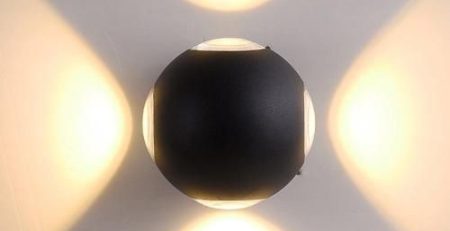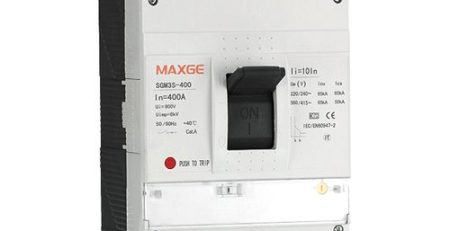Questions and Answers About LED Lighting – Why LED?
1.Q: What are the advantages of LED Lights?
A: LED (Light-Emitting Diode) Lights offer a multitude of advantages over traditional light sources including lower electricity consumption, much longer lifetime, higher durability, no ultraviolet and infrared radiation, low heat and smaller size.
2.Q: Can I directly replace my existing lamps with LED lamps?
A: The LED Lights we offer are direct replacement of incandescent, halogen and compact fluorescent lamps. This means that you do not have to do any changes to your existing system.
3.Q: Why should I choose LED lamps over the cheaper traditional lamps?
A: Consider not only the initial price of the lamp, but the true cost of light, which includes the cost of energy, replacement and maintenance costs.
– LED lights use much less energy. When installed at applications with long work hours the saved electricity cost can bring the payback time to less than 2 years.
– LED lights have much longer life, from 30,000 to 50,000 hours. Imagine that you do not have to change your lamps for the next 20 years, especially those hard to reach light fixtures.
For commercial applications long life LED Lights mean lower replacement costs and no more group relamping. Taken into consideration reduced maintenance costs, the ROI (Return Of Investment) time for LED Lamps can be less than 1 year.
LED lamps produce very little heat thus reducing the power used by your air conditioner.
LED light has no harmful UV (ultraviolet) and IR (infrared) rays.
LED lamps contain NO mercury like the fluorescent lamps. LED Lights are completely safe for the Nature and can be disposed as ordinary waste.
4.Q: Will the Low Voltage LED lamps work with my existing transformer?
A: Low Voltage LED lamps are compatible with magnetic transformers used with VAC lighting. If you have an electronic transformer one LED lamp may not work due to its very low power consumption. To work properly most electronic transformers require a minimum load greater than the 3-watt used by our LED Spot Lights. When connecting a few LED lamps to one transformer the load increases to a point where the use of an electronic transformer is acceptable.
5.Q: How does a LED work?
A: The LED (Light Emitting Diode) is an electronic light source that works by the effect of electroluminescence. When a semiconductor diode is turned on electrons recombine with holes and energy is discharged as light.
6.Q: What is the color of the light from a LED?
The light color of LED Lamps is measured by Correlated Color Temperature (CCT) in Kelvins. Contemporary High Power LEDs are covered with phosphor to convert light from a blue LED to a wide spectrum white light. Most common LED Light colors used are:
Warm White (Soft White) – 2,700 – 3,300 K – the color of the light of a traditional incandescent light bulb
Cool White – around 4,000 K – similar to moonlight, xenon lamp light color
Daylight White > 5,000K – looks like flashlight, or typical daylight.
7.Q: What is Color Rendering Index?
A: The Color Rendering Index (CRI) is measuring the ability of a light source to simulate the colors of different objects accurately in comparison with the sunlight. Although there are critics of the subjective color rendering in practice, the CRI is widely used as a measurement of the quality of the light. Higher CRI corresponds to etter quality light, in scale from 0 to 100.
8.Q: What is the CRI of LED light?
A: Generally LED lamps score above CRI 80, which is higher than many other light sources. LED Lamps with CRI above 90 are used for visual inspection tasks.
9.Q: How efficient LED lamps are?
A: The output of light sources is light and heat. The higher the ratio light to heat, the more efficient the lamp. Today’s high efficient LED lights have efficiency of about 50 %, compared to standard incandescent lamp with 2-3% and fluorescent lamps with 15-20% efficiency.
LEDs naturally have directional light, this means that the light is easier to manage with less losses. That presents an even greater advantage in regards to LED lamps’ high efficiency over all other existing light sources.
10.Q: What is luminous efficacy?
A: The luminous efficacy is the light output per unit power input. It is measured in lumen per watt (lm/W). Nowadays commercially available LEDs have efficacy of 130 lm/W for cool white and 107 lm/W for warm white light (CREE XLamp MX-6). This is much higher compared to incandescent bulb that produces 15 lm/W and fluorescent lamp with 60-70 lm/W.
However, the efficacy of a single LED should not be mixed with the efficacy of the lamp. Many manufacturers and resellers state the LED Lamp Light Output as sum of the output of the individual LEDs. This is not correct because there are always losses from light trapped inside the lamp. The efficacy of a LED Light Lamp, also called LED Light Engine, can be increased by better design and using high quality materials.
11.Q: Is the lumen per watt the only aspect I should consider when choosing a LED Light?
A: No, you should consider also the CRI (quality of light) and your individual visual preferences. Some people like the more yellow Warm (Soft) White light that resembles the light from the incandescent lamp. Other prefer the brighter and more true-color rendering Cool / Daylight white.
12.Q: What is the lifetime of a LED Lamp?
A: When properly installed and well ventilated, LED Lamps will very rarely burn. However, the brightness of the LED light fade over time, so LED Lamp’s life is measured by 2 characteristics – how much will it fade after 1,000 hours of exploitation, and when the brightness will reach 70% of the initial value.
Quality LED Lamps are rated at less than 3% light output decrease for the first 1,000 hours, and 30,000 to 50,000 hours for the 70% decrease, which is the standard for commercial lighting applications.
Again, compared to traditional light sources, LED lights are superior regarding lifetime.
13.Q: Does the lifetime of a LED Light Bulb shorten by frequent on/off switches?
A: Unlike the fluorescent lamps, lifespan of LED Lamps is NOT influenced by frequent switching.









Leave a Reply
You must be logged in to post a comment.